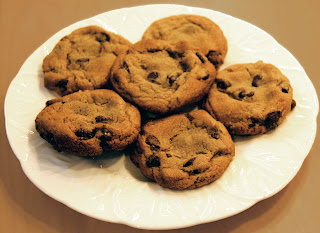September is Head Lice Prevention Month
By Diane Chase
Good grief. Finding out that September is Head Lice Prevention Month was not the welcome message I expected from my inbox this morning. The picture above is not an animation of some upcoming Hollywood blockbuster but two lice viewed under an electron microscope. Note the claws used to grasp onto individual hairs. Photo Credit: Center of Disease Control (CDC).
The egg (also called a nit), the nymph, and the adult.
What are the signs and symptoms of head lice?
1) tickling feeling on your scalp
2) itching caused by an allergic reaction to the bites
3) Difficulty sleeping (lice are most active at night)
4) Sores on the head from scratching.
Treatment
1) Machine wash or dry-clean all hats, scarves, pillow cases, bedding etc... used or worn by the infected person. Lice and their eggs will be killed by 5 minutes exposure to temperatures over 128.3˚F or sealed in a plastic bag for 2 weeks.
2) An over-the-counter remedy can be used. Follow the directions carefully or a re-infestation may occur.
3) There are home remedies but I have never tried (and hope I never have to) them.
© Diane Chase, author of Adirondack Family Time: Tri-Lakes and High Peaks (Your Four-Season Guide to Over 300 Activities) for the towns of Lake Placid, Saranac Lake, Jay/Upper Jay, Wilmington, Keene/Keene Valley which is available online or bookstores/museums/sporting good stores. Diane is currently working on the second guidebook in the four-book series of Adirondack Family Activities.
Good grief. Finding out that September is Head Lice Prevention Month was not the welcome message I expected from my inbox this morning. The picture above is not an animation of some upcoming Hollywood blockbuster but two lice viewed under an electron microscope. Note the claws used to grasp onto individual hairs. Photo Credit: Center of Disease Control (CDC).
 |
Photo Credit: Center of Disease Control (CDC). |
What are head lice?
The head louse (Pediculus humanus capitis) is a parasitic insect that can be found on the head, eyebrows, and eyelashes of people. (That makes me want to itch my head.)
They feed on human blood several time a day and live close to the human scalp. Head lice are not known to spread disease.
Who is at risk for getting head lice?
Head lice are found worldwide. In the United States, infestation with head lice is most common among preschoolchildren attending child care, elementary schoolchildren, and the household members of infested children.
According to the CDC head lice move by crawling; they cannot hop or fly. Head lice are spread by direct contact with the hair of an infested person. So no head-to-head combat.
True or False?
Head lice is spread by contact with clothing (such as hats, scarves, coats) or other personal items (such as combs, brushes, or towels). True. Though it is uncommon for people to get get lice through personal items, it can happen so avoid sharing clothing (hats, scarves, coats, sports wear) or hair accessories (ribbons, barrettes, combs, brushes) also do not use other people's towels, pillows and stuffed animals.
True or False?
Dirty people get lice. False. Personal hygiene or cleanliness in the home or school has nothing to do with getting head lice. It is spread by head-to-head contact.What are the three forms of head lice? The egg (also called a nit), the nymph, and the adult.
What are the signs and symptoms of head lice?
1) tickling feeling on your scalp
2) itching caused by an allergic reaction to the bites
3) Difficulty sleeping (lice are most active at night)
4) Sores on the head from scratching.
Treatment
1) Machine wash or dry-clean all hats, scarves, pillow cases, bedding etc... used or worn by the infected person. Lice and their eggs will be killed by 5 minutes exposure to temperatures over 128.3˚F or sealed in a plastic bag for 2 weeks.
2) An over-the-counter remedy can be used. Follow the directions carefully or a re-infestation may occur.
3) There are home remedies but I have never tried (and hope I never have to) them.
© Diane Chase, author of Adirondack Family Time: Tri-Lakes and High Peaks (Your Four-Season Guide to Over 300 Activities) for the towns of Lake Placid, Saranac Lake, Jay/Upper Jay, Wilmington, Keene/Keene Valley which is available online or bookstores/museums/sporting good stores. Diane is currently working on the second guidebook in the four-book series of Adirondack Family Activities.




Comments